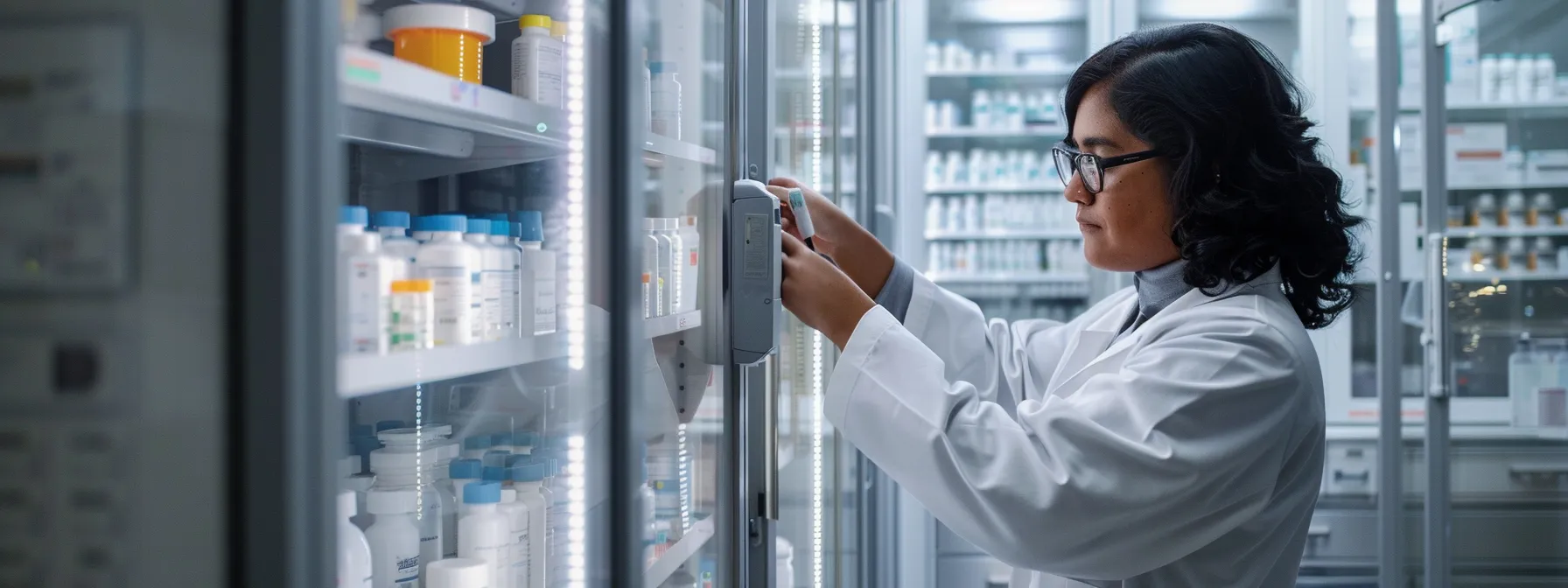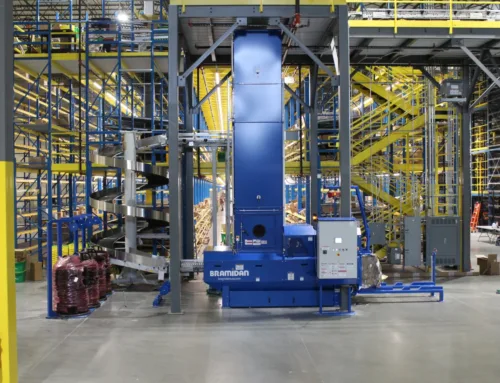
Pharmacy equipment has undergone significant advancements in recent years, revolutionizing the way pharmacies operate and deliver care. From robotic prescription filling systems to AI-powered pharmaceutical care, these innovations are reshaping the industry. End2End Logix offers cutting-edge products and services to help pharmacies stay at the forefront of these technological trends. In this article, we’ll explore the latest breakthroughs in pharmacy equipment and their impact on patient care. Keep reading to discover how these advancements can transform your pharmacy operations and improve medication adherence.
Transforming Prescription Filling With Robotic Systems

Robotic systems have revolutionized prescription filling in modern pharmacies. These advanced machines streamline the medication dispensing process, enhancing accuracy and efficiency. By automating routine tasks, robotics free up pharmacists to focus on patient care and clinical products and services. You’ll find that these systems not only reduce errors in medication selection and dosing but also significantly speed up the entire prescription fulfillment process. As you explore the impact of automation on pharmacy operations, you’ll discover how these innovations are reshaping workflow patterns and improving overall productivity. Feel free to contact us for more information.
How Robotics Has Improved Accuracy in Dispensing Medication
Robotic systems have dramatically improved accuracy in medication dispensing end2end logix. You’ll find that these automated systems use barcode scanning and advanced algorithms to ensure the correct medication and dosage are selected every time. This technology has significantly reduced human error, providing you with greater confidence in the safety and precision of your prescriptions. Consider the following benefits of robotic dispensing systems contact us:
- Reduced medication errors
- Increased dispensing speed
- Improved inventory management
- Enhanced patient safety
- Greater efficiency in high-volume pharmacies
The Impact of Automation on Pharmacy Workflow Efficiency
Automation has dramatically transformed pharmacy workflow efficiency. You’ll find that robotic systems handle repetitive tasks like counting pills and labeling bottles, allowing pharmacists to focus on patient consultations and medication management. This shift in workflow has led to faster prescription processing times and reduced wait times for customers. The streamlined operations also minimize the risk of errors and improve overall productivity. Consider the key benefits of automated pharmacy workflows:
- Faster prescription processing
- Reduced wait times for patients
- Improved accuracy in medication dispensing
- Increased time for pharmacist-patient interactions
- Enhanced inventory control and management
Breakthroughs in Drug Compounding Technology

Drug compounding technology has seen remarkable advancements in recent years, transforming the way pharmacies create custom medications for patients. You’ll find that these innovations have significantly improved the precision and safety of compounded drugs. Modern equipment now allows for exact measurements and controlled mixing environments, ensuring consistent quality in every preparation. Automated compounding systems have further enhanced patient safety by reducing the risk of human error and contamination. As you explore these breakthroughs, you’ll discover how they’re enabling pharmacists to meet increasingly complex medication needs while maintaining the highest standards of safety and efficacy.
Innovations Allowing for Precise Custom Medication Mixes
Innovations in drug compounding technology have revolutionized the creation of precise custom medication mixes. You’ll find that advanced robotic systems now enable pharmacists to blend ingredients with unprecedented accuracy, ensuring each patient receives the exact formulation they need. These cutting-edge machines utilize sophisticated software and precision instruments to measure, mix, and package custom medications, greatly reducing the risk of human error:
- Automated weighing and dispensing systems
- High-performance liquid chromatography for quality control
- Sterile compounding robots for intravenous medications
- 3D printing technology for personalized dosage forms
- Microfluidic devices for nano-scale drug formulations
Enhancing Patient Safety With Automated Compounding Systems
Automated compounding systems have significantly enhanced patient safety in pharmacies. You’ll find these systems minimize the risk of human error, ensuring precise measurements and sterile conditions during medication preparation. By eliminating manual handling, they reduce the potential for contamination and improve the consistency of compounded medications. Consider the key safety features of automated compounding systems:
- Real-time error detection and alerts
- Barcode verification for ingredients
- Automated documentation for regulatory compliance
- Controlled access to prevent unauthorized use
- Integration with electronic health records for accurate patient information
Smart Storage Solutions Redefining Pharmacy Inventory Management

Smart storage solutions are revolutionizing pharmacy inventory management. You’ll find that these advanced systems integrate cutting-edge technologies to streamline stock control, enhance accuracy, and optimize space utilization. By implementing RFID technology and automated storage cabinets, pharmacies can now track drug inventory with unprecedented precision and efficiency. These innovations not only reduce manual errors but also free up valuable floor space, allowing for a more organized and productive pharmacy environment. As you explore these smart storage solutions, you’ll discover how they’re transforming the way pharmacies handle their inventory, leading to improved patient care and operational efficiency.
The Role of RFID Technology in Tracking Drug Inventory
RFID technology plays a crucial role in modernizing drug inventory tracking in pharmacies. You’ll find that these tiny electronic tags provide real-time visibility into stock levels, expiration dates, and product locations. By automating the inventory process, RFID systems significantly reduce human error and improve efficiency. Consider the key benefits of RFID in pharmacy inventory management:
- Instant stock counts without manual intervention
- Automated reordering based on predefined thresholds
- Enhanced tracking of controlled substances
- Improved recall management and lot traceability
- Reduced shrinkage and prevention of theft
Automated Storage Cabinets and Their Contribution to Space Optimization
Automated storage cabinets have revolutionized space optimization in pharmacies. You’ll find these systems maximize vertical space utilization, allowing you to store more inventory in a smaller footprint. By implementing carousel or robotic retrieval mechanisms, these cabinets enable quick and accurate access to medications, reducing retrieval times and improving workflow efficiency.
Integration of Artificial Intelligence Into Pharmaceutical Care

Artificial intelligence is transforming pharmaceutical care, offering unprecedented capabilities in drug interaction analysis and personalized treatment plans. You’ll find AI systems now able to process vast amounts of medical data to predict potential medication interactions and side effects with remarkable accuracy. These advanced algorithms consider factors like patient history, genetic makeup, and current medications to provide tailored recommendations. Machine learning models are revolutionizing patient care by analyzing patterns in large datasets to suggest personalized treatment regimens. As you explore these AI-driven innovations, you’ll discover how they’re enhancing pharmacists’ decision-making processes and improving patient outcomes through more precise and individualized pharmaceutical care.
AI’s Role in Predicting Medication Interactions and Side Effects
AI systems are revolutionizing the prediction of medication interactions and side effects in pharmaceutical care. You’ll find these intelligent algorithms analyze vast databases of drug information, patient records, and clinical studies to identify potential risks with remarkable accuracy. By considering factors such as a patient’s medical history, current medications, and genetic profile, AI can provide personalized recommendations to minimize adverse reactions and optimize treatment outcomes. Consider the key benefits of AI in predicting medication interactions:
- Real-time analysis of drug-drug interactions
- Identification of potential adverse reactions based on patient-specific factors
- Continuous learning from new clinical data to improve predictions
- Integration with electronic health records for comprehensive risk assessment
- Support for pharmacists in making informed decisions about medication safety
Personalized Patient Care Through Machine Learning Algorithms
Machine learning algorithms are revolutionizing personalized patient care in pharmacies. You’ll find these advanced systems analyze vast amounts of patient data, including medical history, genetic information, and lifestyle factors, to generate tailored treatment recommendations. By identifying patterns and correlations that humans might miss, these algorithms help pharmacists provide more precise and effective medication regimens for individual patients.
Wearable Devices and Their Impact on Patient Medication Adherence

Wearable devices are revolutionizing patient medication adherence, offering innovative solutions to one of healthcare’s most persistent challenges. You’ll find these smart technologies seamlessly integrate into patients’ daily lives, providing timely reminders and tracking medication intake with unprecedented accuracy. Smartwatches now serve as personal health assistants, alerting users to dosage schedules and monitoring vital signs. Meanwhile, health monitoring bands are transforming chronic disease management by continuously collecting and analyzing patient data. These advancements not only improve medication compliance but also enable healthcare providers to make more informed decisions about treatment plans. As you explore the impact of wearables on pharmacy care, you’ll discover how these devices are fostering a more proactive and personalized approach to patient health management.
How Smartwatches Are Being Used to Remind Patients About Dosages
Smartwatches have become powerful tools in improving medication adherence by providing timely dosage reminders. You’ll find these devices can be programmed to alert you with gentle vibrations or discreet notifications when it’s time to take your medication. Many smartwatch apps now integrate with pharmacy systems, allowing for automatic updates to your dosage schedule and providing real-time tracking of your medication intake.
The Future of Health Monitoring Bands in Chronic Disease Management
Health monitoring bands are poised to revolutionize chronic disease management in the near future. You’ll find these devices equipped with advanced sensors capable of continuously tracking vital signs, medication adherence, and even early warning signs of disease progression. As technology advances, these bands will likely integrate with artificial intelligence systems to provide real-time health insights and personalized treatment recommendations, enabling more proactive and effective chronic disease management.
Conclusion
Advances in pharmacy equipment have revolutionized the pharmaceutical industry, enhancing accuracy, efficiency, and patient safety. Robotic systems and automated compounding technologies have significantly reduced medication errors and streamlined workflow processes. Smart storage solutions and artificial intelligence integration have optimized inventory management and personalized patient care. Wearable devices have emerged as powerful tools for improving medication adherence and chronic disease management, paving the way for a more proactive approach to healthcare.
Share This Story, Choose Your Platform!
Get In Touch
Phone: (847) 722-6942
Email: sales@end2endlogix.com
Web: end2endlogix.com



